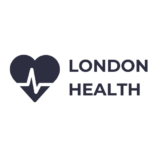Osteoporosis is a condition that affects the strength of the bones; it affects more than 3 million people in the UK. Osteoporosis is more common in older people but it can affect people of all ages; age is often a risk factor, as the bones become weaker as we get older. Bone is regenerated and built during the first 25-35 years of our lives; after this, regeneration becomes much slower as the living bone cells stop breaking down old bone cells and replacing them with new bone cells.
What causes osteoporosis?
From the age of 35 onwards, the bones become weaker as the number of cells that are lost becomes greater than the number of cells that are made. Other risk factors for osteoporosis include:
- Sex: women are much more likely to develop osteoporosis than men; this is mainly due to decrease in oestrogen levels in the body after the menopause. Women that have the menopause before the age of 40, those that have gone long periods of time without having a period (usually caused by being severely under or over weight) and those that have had a hysterectomy before the age of 45 are at a higher risk of having osteoporosis.
- Hormone conditions: conditions that affect the hormone production in the body, including hyperthyroidism, diabetes, problems with the pituitary gland and a reduction in the production of sex hormones (testosterone and oestrogen) can increase the risk of developing osteoporosis.
- Family history
- Sedentary lifestyle (either brought about by illness and long term bed-rest or as a result of a prolonged lack of physical activity)
- Digestive disorders that affect absorption, including Crohn’s disease and Coeliac disease
- Excessive drinking
- Heavy smoking
- Low calcium intake
- Low levels of vitamin D
Symptoms of osteoporosis
Osteoporosis develops gradually over the course of time, so symptoms may not appear for many years; in many cases, osteoporosis is not diagnosed until somebody experiences a bone fracture. Common signs of osteoporosis include vulnerability to fractures and breaks and changes in shape to the bones (the curvature or ‘hump back’ is a common sign of osteoporosis in elderly people).
Treating osteoporosis
There are a variety of treatments available for people that suffer from osteoporosis; these include:
- Hormone Replacement Therapy (HRT): this is used to treat women that are going through or have gone through, the menopause. It helps to regulate bone density and reduce the risk of breaks and fractures.
- Medication: medication to maintain bone density is often prescribed to patients with osteoporosis; examples of medications include bisphosphonates.
- Calcium and vitamin D supplements; these help to maintain bone strength and reduce the risk of fractures and breaks.
Preventing osteoporosis
In order to help prevent the development of osteoporosis there are a number of steps you can take; these include:
- Exercising regularly (including strength and resistance training, as well as aerobic training)
- Eating a healthy diet
- Taking in plenty of calcium (calcium rich foods include yoghurt, cheese and milk)
- Stopping smoking
- Cutting down on alcohol
- Keeping your home safe (to prevent accidents which may lead to fractures)

